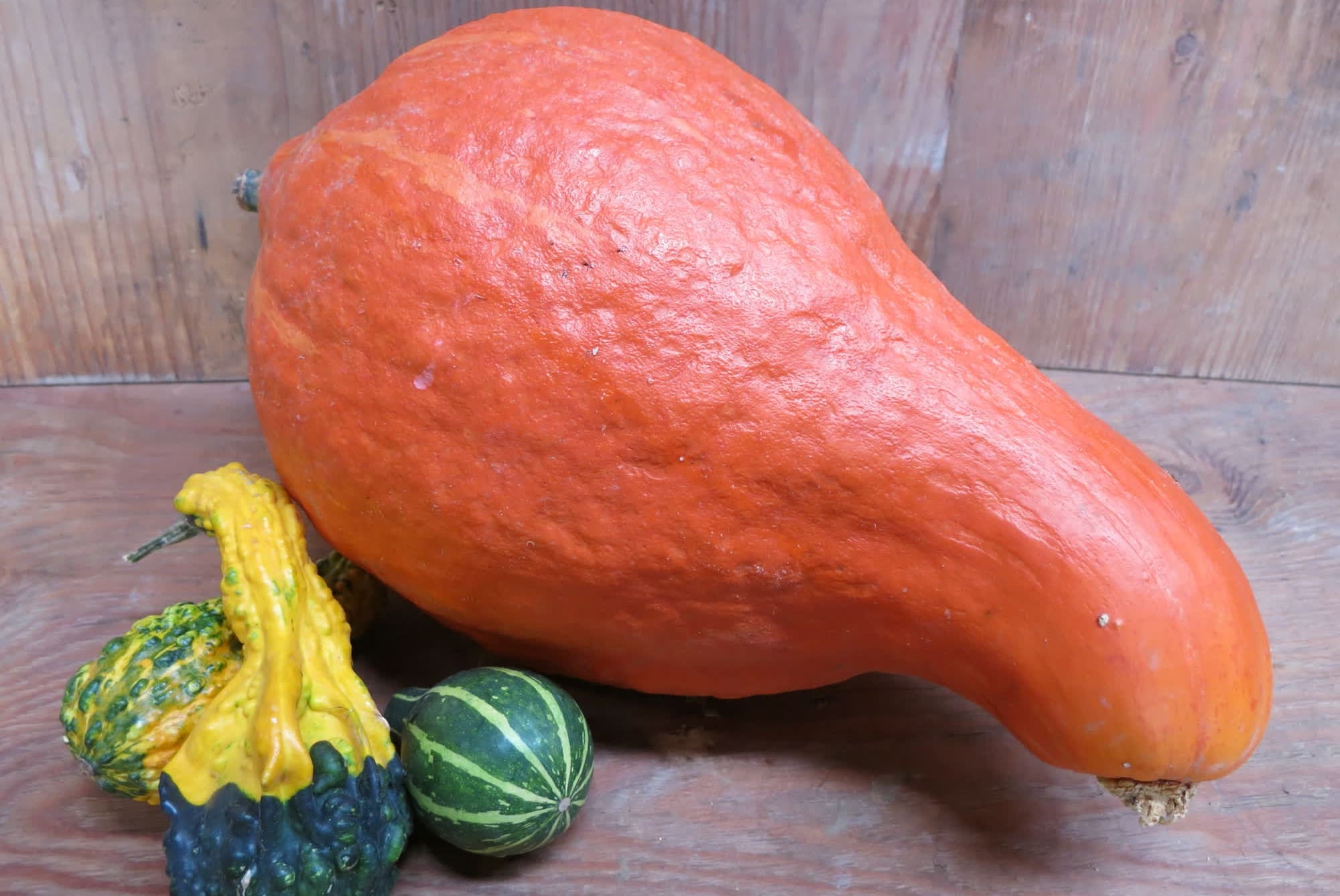
Boston Marrow Squash is a unique heirloom variety with a rich history dating back to the early 1800s. This vibrant, red-orange squash is not just a feast for the eyes but also a culinary delight. Its sweet, nutty flavor makes it perfect for pies, soups, and roasting. But what makes Boston Marrow Squash truly special? Its origins trace back to Native American tribes who valued it for its taste and storage capabilities. Over time, it became a staple in New England kitchens. Today, gardeners and chefs alike cherish this squash for its versatility and historical significance. Ready to learn more? Let's dive into 20 fascinating facts about Boston Marrow Squash!
Key Takeaways:
- Boston Marrow Squash is a sweet, nutty winter squash with a rich history and Native American roots. It's perfect for soups, pies, and roasting, offering a unique flavor and creamy texture.
- This heirloom squash originated in 19th century Boston and can grow quite large. It requires full sun, consistent watering, and is ideal for roasting, soups, and pies.
What is Boston Marrow Squash?
Boston Marrow Squash is a type of winter squash known for its sweet, nutty flavor and vibrant orange flesh. This heirloom variety has a rich history and unique characteristics that make it a favorite among gardeners and chefs alike.
-
Heirloom Variety: Boston Marrow Squash is an heirloom variety, meaning it has been passed down through generations without genetic modification.
-
Origin: This squash originated in the 19th century in the Boston area, hence its name.
-
Appearance: It has a distinctive teardrop shape with a bright orange-red skin.
-
Size: Boston Marrow Squash can grow quite large, often reaching weights of 10-20 pounds.
-
Flavor: Known for its sweet, nutty flavor, it is often compared to butternut squash but with a richer taste.
-
Texture: The flesh is smooth and creamy, making it ideal for soups and purees.
Historical Significance of Boston Marrow Squash
This squash has a storied past, playing a significant role in American agriculture and cuisine.
-
Native American Roots: Native Americans were the first to cultivate Boston Marrow Squash, using it as a staple in their diet.
-
19th Century Popularity: It became widely popular in the 19th century, especially in New England.
-
Seed Preservation: The seeds were preserved by early American settlers, ensuring its survival through the centuries.
-
Culinary Use: Historically, it was a common ingredient in pies, soups, and stews.
-
Agricultural Impact: It played a role in the development of other squash varieties through selective breeding.
Growing Boston Marrow Squash
Cultivating this squash requires some knowledge and care, but the rewards are well worth the effort.
-
Planting Season: Plant seeds in late spring after the last frost for optimal growth.
-
Soil Requirements: It thrives in well-drained, fertile soil with plenty of organic matter.
-
Sunlight: Full sun exposure is essential for healthy growth.
-
Watering: Consistent watering is crucial, especially during dry spells.
-
Pest Control: Watch out for common pests like squash bugs and vine borers.
Culinary Uses of Boston Marrow Squash
This versatile squash can be used in a variety of delicious dishes.
-
Roasting: Roasting brings out its natural sweetness and enhances its nutty flavor.
-
Soups and Stews: Its creamy texture makes it perfect for hearty soups and stews.
-
Pies: Often used as a substitute for pumpkin in pies, offering a richer taste.
-
Purees: Ideal for making smooth purees that can be used in various recipes.
The Final Scoop on Boston Marrow Squash
Boston Marrow Squash isn't just any squash. Its rich history, unique flavor, and nutritional benefits make it a standout. From its origins with Native Americans to its role in New England cuisine, this squash has a story worth telling. Its sweet, nutty taste pairs well with both savory and sweet dishes, making it versatile in the kitchen. Plus, it's packed with vitamins A and C, fiber, and antioxidants. Growing Boston Marrow Squash can be rewarding too, as it thrives in various climates and offers a good yield. Whether you're a gardener, a cook, or just someone who loves learning about unique foods, Boston Marrow Squash has something to offer. So next time you're at the market or planning your garden, give this historic squash a try. You won't be disappointed!
Frequently Asked Questions
Was this page helpful?
Our commitment to delivering trustworthy and engaging content is at the heart of what we do. Each fact on our site is contributed by real users like you, bringing a wealth of diverse insights and information. To ensure the highest standards of accuracy and reliability, our dedicated editors meticulously review each submission. This process guarantees that the facts we share are not only fascinating but also credible. Trust in our commitment to quality and authenticity as you explore and learn with us.


